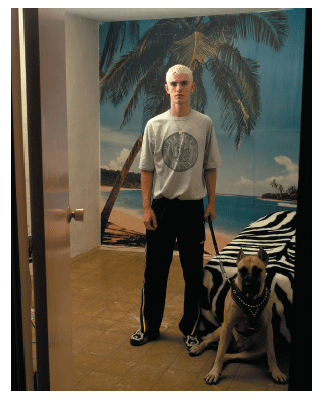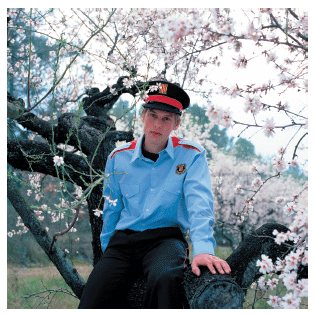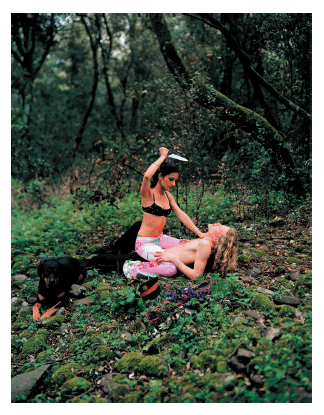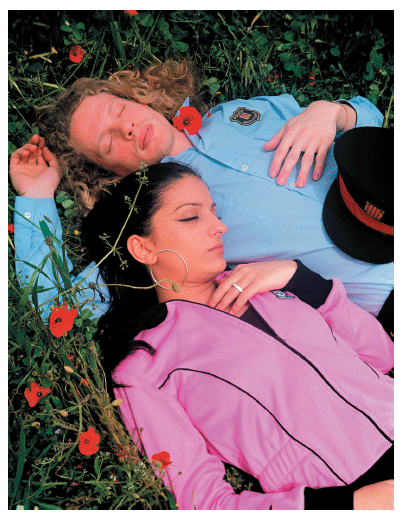
NoWhere. A solo show by Juan Pablo Ballester on view at Farside Gallery
By Janet Batet, Miami Arts Journalist
Existence -as a conscious coexistence and survival- implies a constant redefinition of our condition as a subject amidst the human flow in which we imbricate or not. And this dilemma looms from the overwhelming pariah status that, one way or another, marks us every day. Existence, therefore involves a complex web of relationships, often surreptitious, that determine our place as a subject –individual identities- inside collective precepts, most of the time, servile mandates of invisible structures of power that determine our existence.
The series of Juan Pablo Ballester, NoWhere, settles right in this subtle and visceral dichotomy where the self exists –or perhaps, attempts to exist- just at the edge, in a sort of a limbo.
By appropriating established genres such as the Landscape and the Portrait, and making use of the academic standards that identify them, Ballester creates a urban fable with dislocated beings from the environment that holds them, strengthening thereby this feeling of not belonging so dear to the series. The use of the portrait, employed throughout history as allegory of the everlasting and reaffirmation of the symbols of power, contrasts with the portrayed subjects, which according to the logic functionality of the portrait genre, emerge as unrepresentable.
Ambivalence is the leitmotif that animates the series. The context in which the characters are placed is not clear -even when responding to symbolic locations heavily loaded of meaning and directly related to the status quo[1]. Neither do we know, with certainty, who are the represented ones. Only from hints and attitudes, can we recreate a fiction of them -as we do it in our daily life with the other. Frozen they in these snapshots -which, additionally, are not: the selection of the subject and the setting is the result of a rigorous selection- the portrayed ones seem excommunicated from the inhabiting space and with regard to temporal coordinates, it seems we get access only to a frame extirpated from a larger sequence, that as we don’t know, leaves us in suspense, disoriented.
The underlying theme of the series is the contemporary subject that, housed in a metaphysical space, becomes uprooted in the midst of the global society that excludes him.
The delicate spinning narrative between the real, credible and fictionalized in Ballester’s work may be retraced chronologically through his photographic series, starting from his own experience of uprooting -that emerges from that gutter process of otherness and assimilation that involves the migration process and that is evident in his series Basado en hechos reales / Based on Real Facts (1997-98) to later, in En ningún lugar / NoWhere (2000-ongoing) to incarnate his own status as a displaced subject after other entities, reflection, in turn, of urgent identity issues that are the core the artist’s proposal. I am referring to the dichotomy of social order-subjectivity, identifying the first one with the pernicious rules derived from the heteronormativity that, as a power structure, outlines our “ought to be” after what is acceptable and unacceptable; identified the acceptable as male, heterosexual and white.
Difficult to grasp, NoWhere creates a feeling of discomfort in the viewer that struggles amid the beauty of the images and their dark meaning; amid the bucolic atmosphere and the disturbing characters who, at times, hover threateningly –due to their condition of otherness. The meddling between public and private and the whimsical aura of these images halfway between romantic iconography and ethnographic images reinforce the sense of poetic anthropology that encourages this series. The answers, if any, should be a quest of our own. Meanwhile, in front of the picture, Ballester blurts out many uncomfortable questions: those that, on a daily basis, we prefer to avoid.
NoWhere, open to the public at Farside Gallery until October 27.




[1] Many of the landscapes that animate the series, made in Catalonia, respond to icons from the Catalan culture -known for its nationalist character. Among them, the Canigó, the Roman ruins of Ampurías, the Romanesque facade of the chapel of en Jordà, or the Montserrat.
Recent Content
-
Artsarticle ·
-
Artsarticle ·
-
Artsarticle ·

